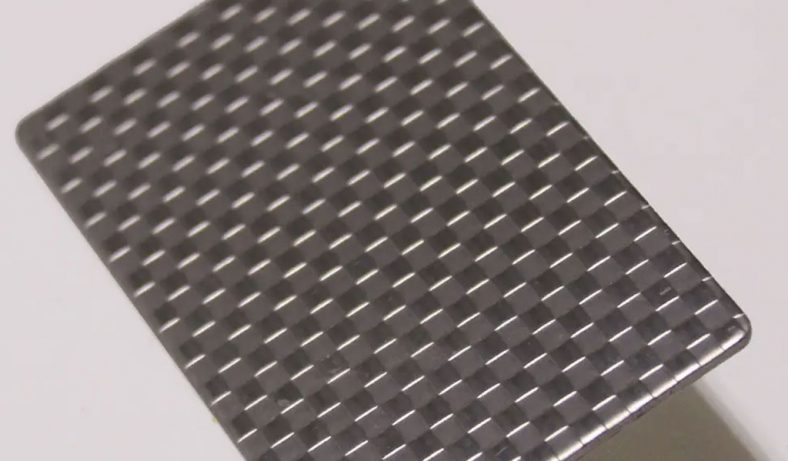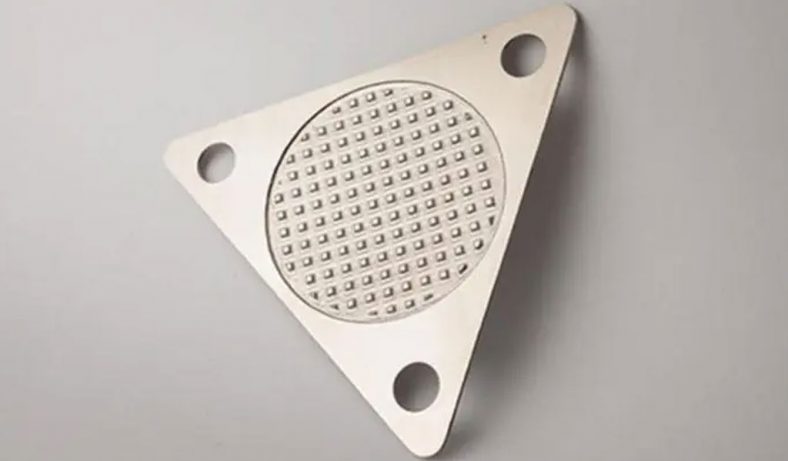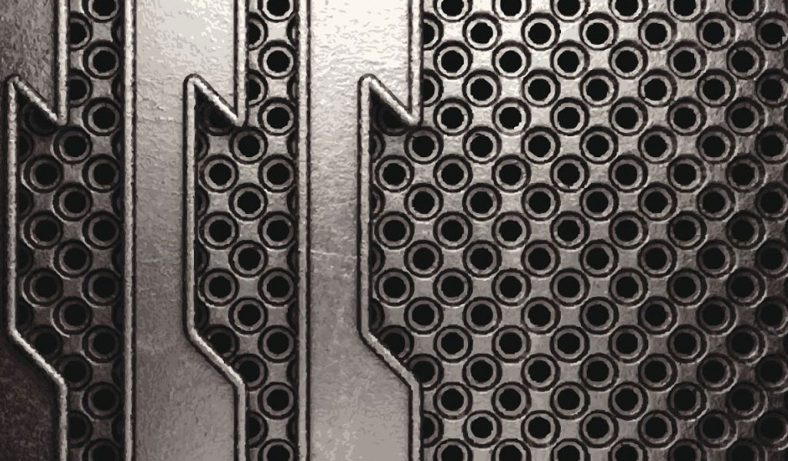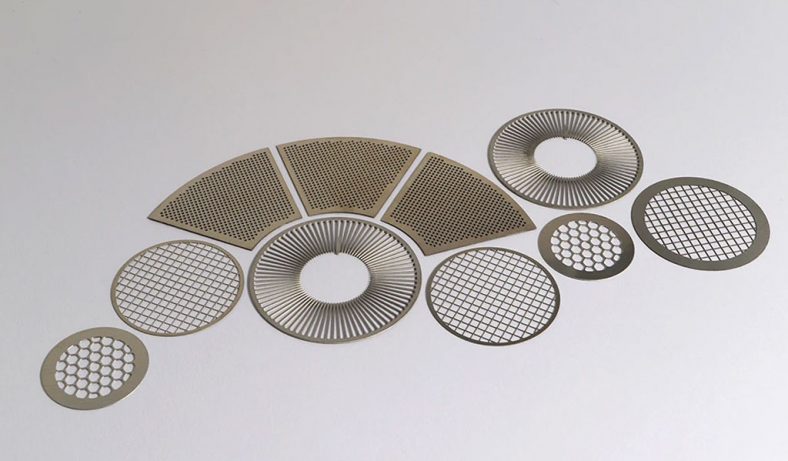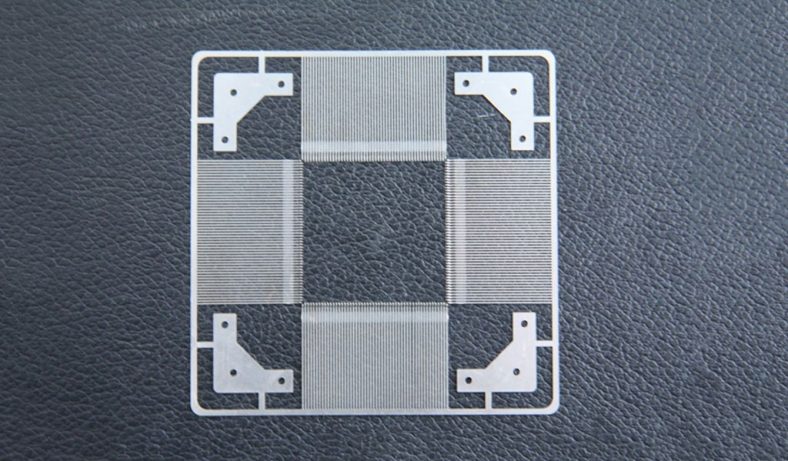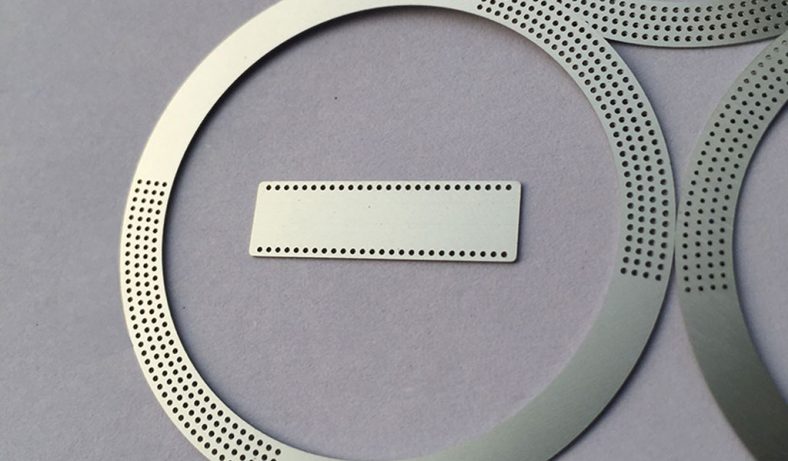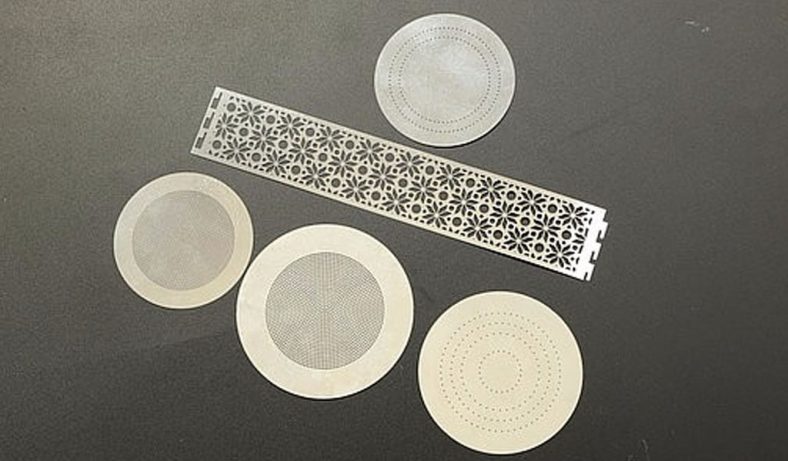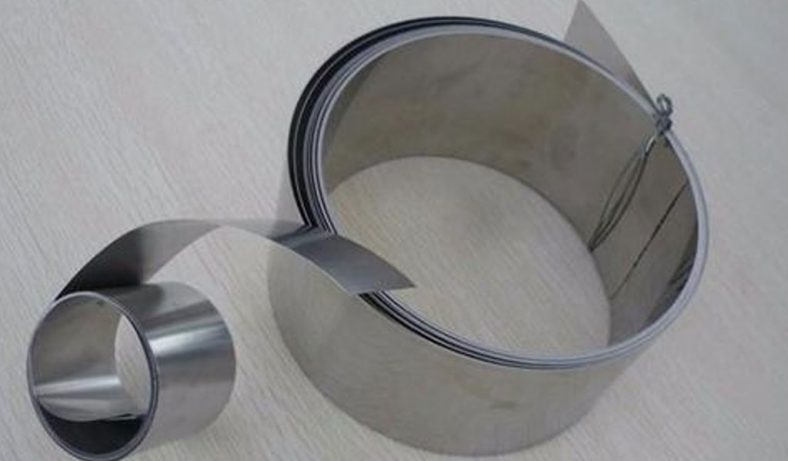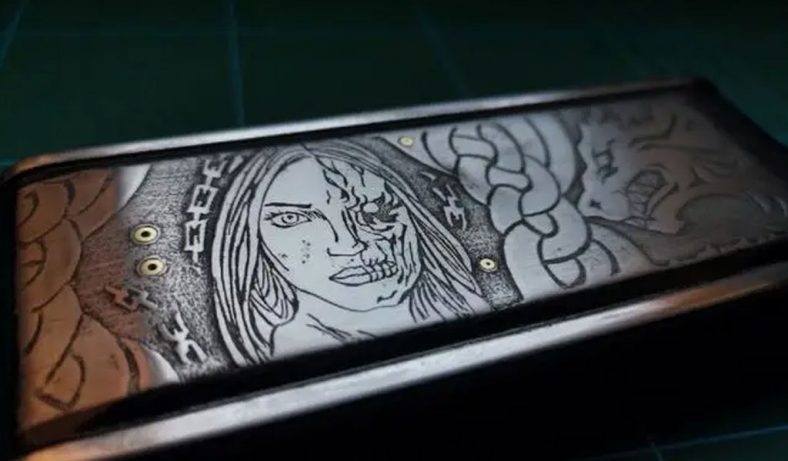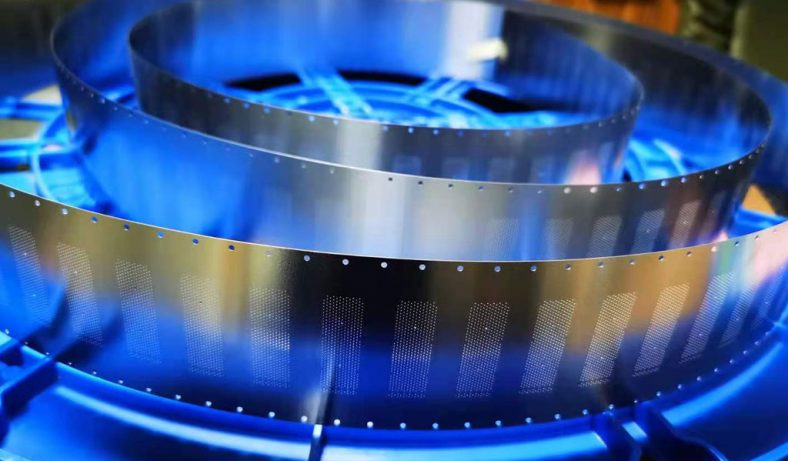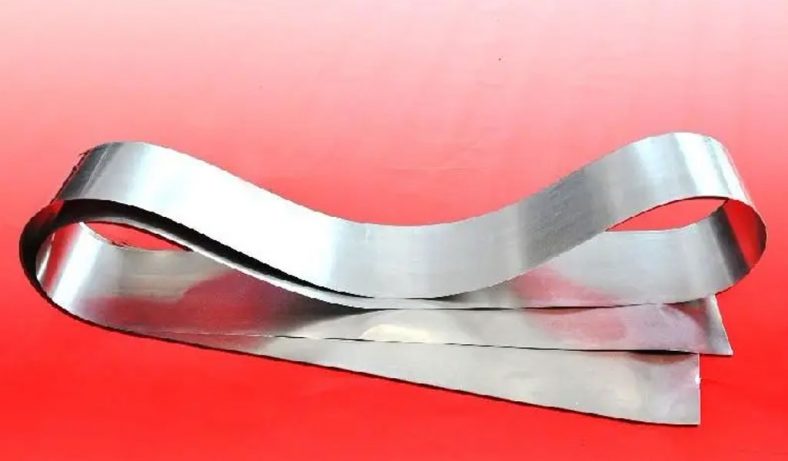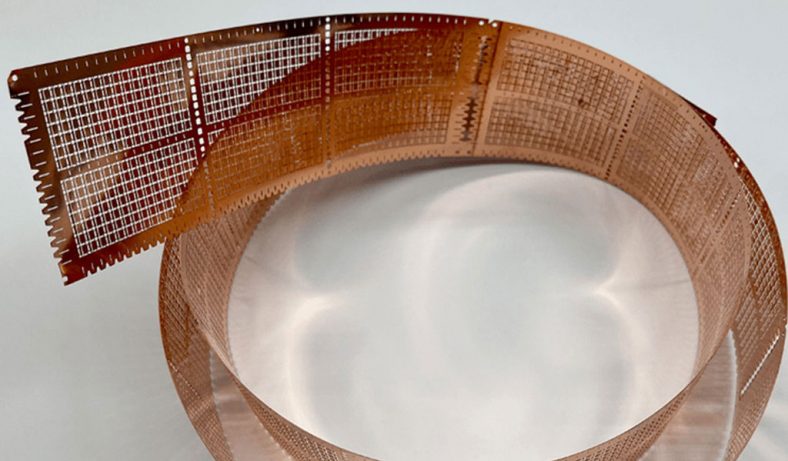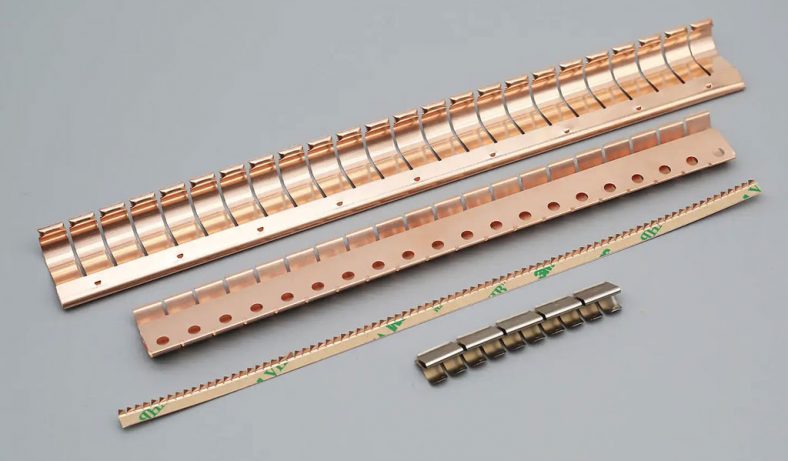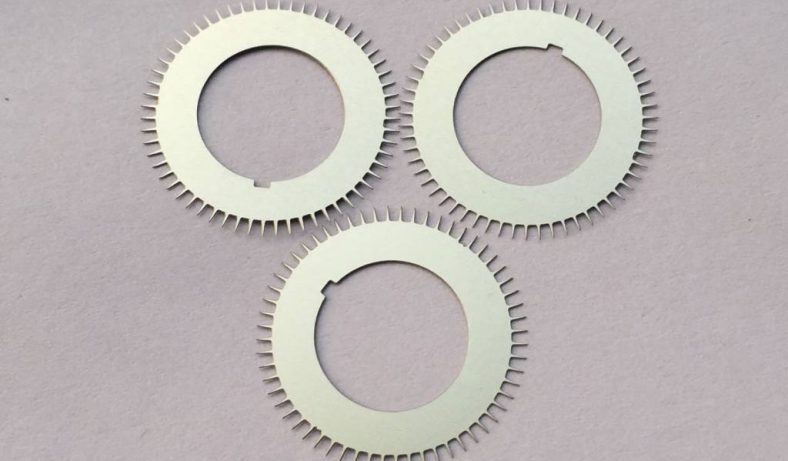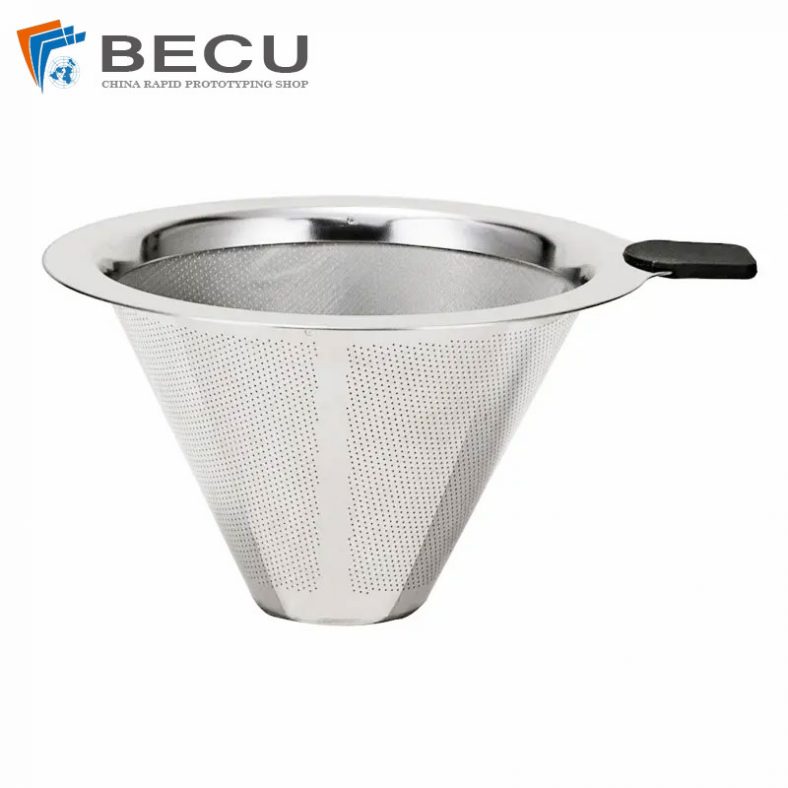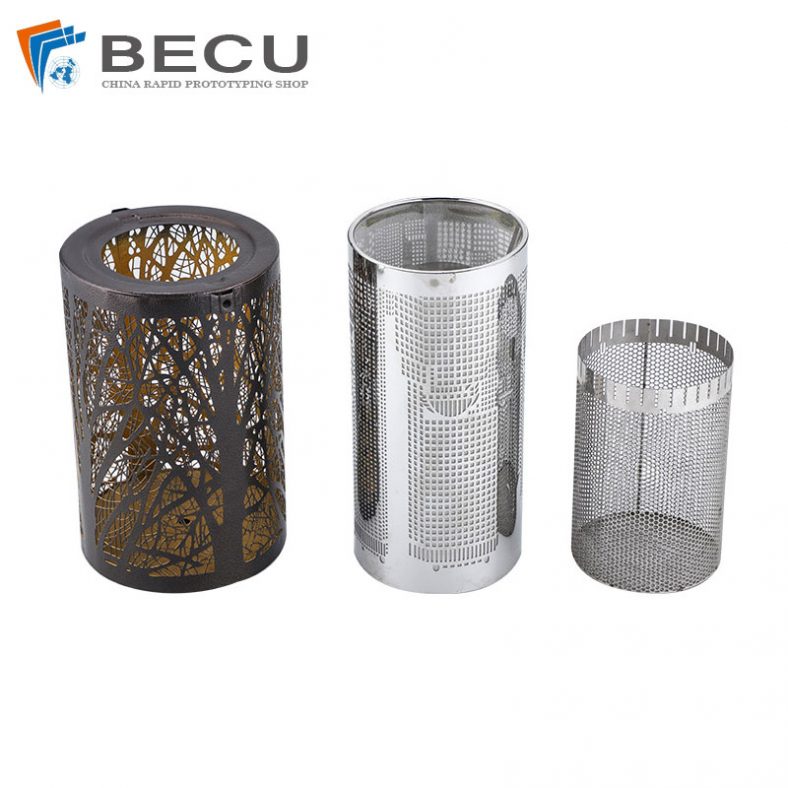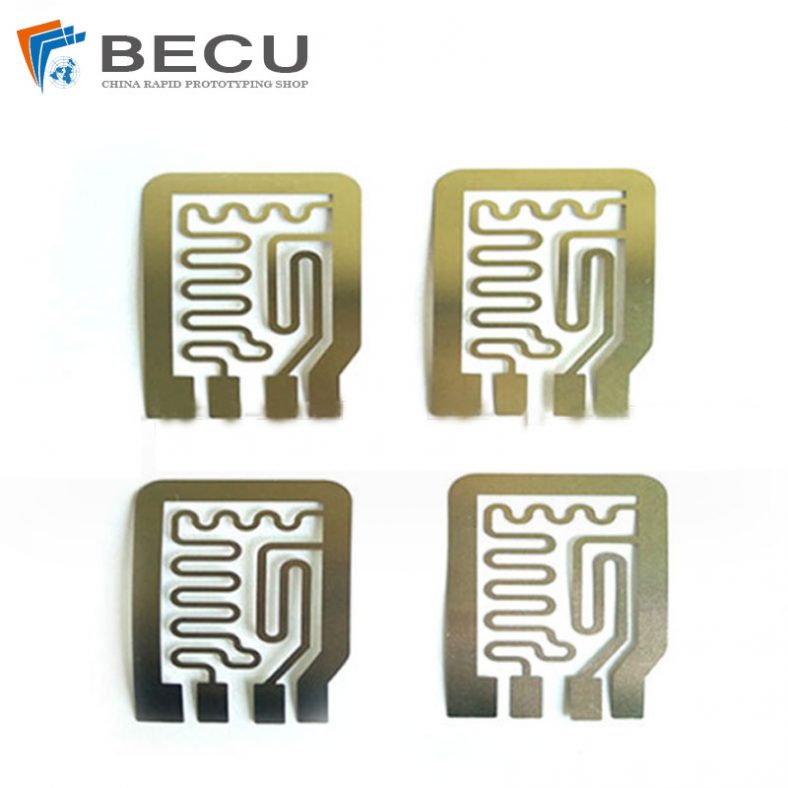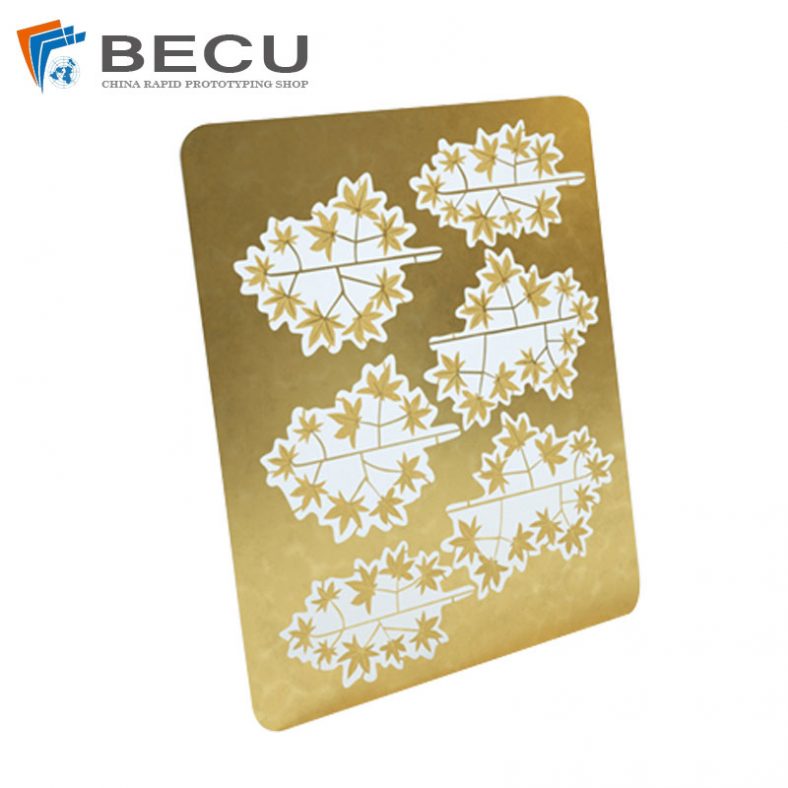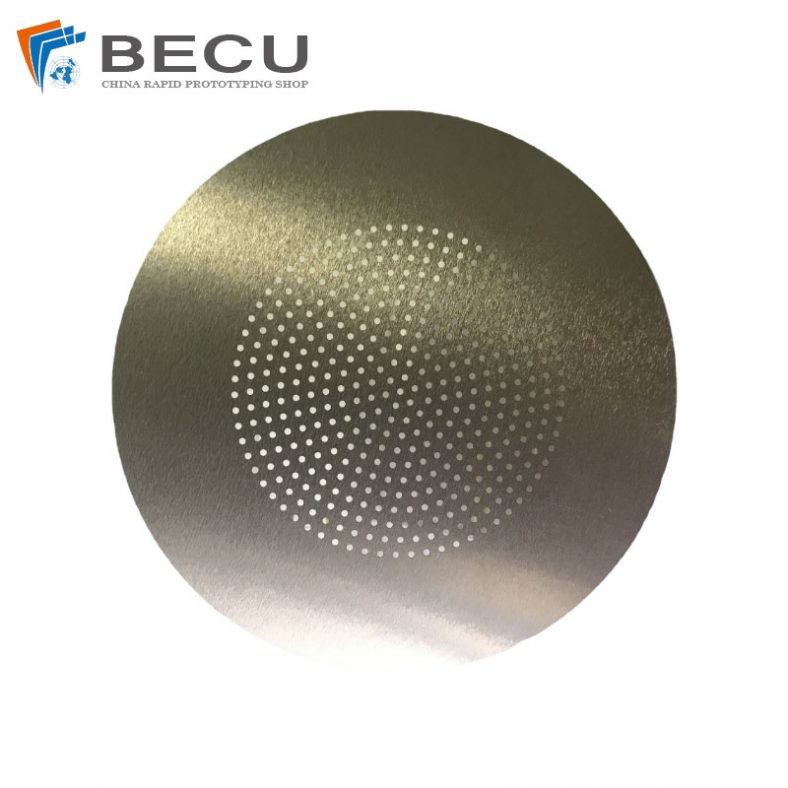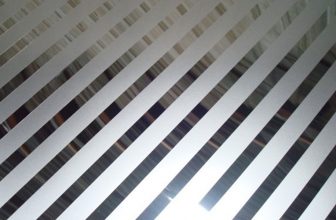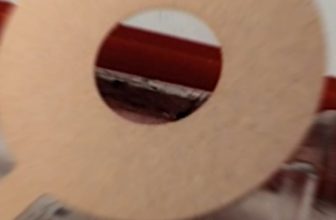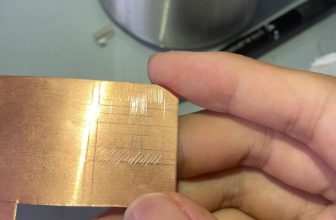Metal fabrication is a cornerstone of industrial manufacturing, encompassing a wide range of processes that transform raw metal into finished components or products. Among these processes, metal etching stands out for its precision, versatility, and ability to produce intricate designs on metal surfaces. This article provides an in-depth exploration of metal etching, comparing it comprehensively with other metal fabrication processes such as laser cutting, stamping, milling, waterjet cutting, plasma cutting, electrochemical machining (ECM), electrical discharge machining (EDM), and forging. By examining the principles, applications, advantages, limitations, and technical considerations of each method, this article aims to offer a thorough understanding of how metal etching fits within the broader landscape of metal fabrication. Detailed tables are included to facilitate comparisons across key parameters.
Introduction to Metal Fabrication
Metal fabrication refers to the creation of metal structures or components through processes that involve cutting, shaping, joining, or finishing. These processes are employed across industries such as aerospace, automotive, electronics, medical device manufacturing, and architecture, producing everything from microscale circuit components to large-scale structural beams. The choice of fabrication method depends on factors like material properties, part complexity, production volume, cost constraints, and desired tolerances.
Metal etching, also known as chemical etching or photochemical machining (PCM), is a subtractive manufacturing process that uses chemical solutions to selectively remove material from a metal surface. Unlike mechanical methods that rely on physical force or heat, etching offers a non-contact approach, making it suitable for delicate or thin materials. To contextualize metal etching, it is essential to compare it with other fabrication processes, each of which has unique characteristics suited to specific applications.
Metal Etching: Principles and Process
Overview of Metal Etching
Metal etching involves the controlled dissolution of metal using a chemical etchant, typically an acid or alkaline solution, to create patterns, shapes, or features on a metal workpiece. The process is highly precise, capable of achieving tolerances as tight as ±0.01 mm, and is widely used for producing intricate components like microfilters, circuit boards, and decorative panels.
Types of Metal Etching
There are several variations of metal etching, each tailored to specific materials or applications:
- Photochemical Etching (PCM): This method uses a photoresist—a light-sensitive polymer—applied to the metal surface. A photographic mask, or photomask, defines the desired pattern. Exposure to ultraviolet (UV) light hardens the photoresist in selected areas, while unexposed areas are washed away, leaving the metal exposed to the etchant. PCM is ideal for high-precision applications, such as electronic components and aerospace parts.
- Wet Etching: In wet etching, the metal is submerged in or sprayed with a liquid etchant, such as ferric chloride for steel or nitric acid for copper. This method is versatile and cost-effective but may produce less uniform results compared to PCM due to isotropic etching (etching equally in all directions).
- Dry Etching: Used primarily in semiconductor manufacturing, dry etching employs plasma or reactive gases to remove material. It offers anisotropic etching (directional material removal), enabling sharper feature definition, but it requires specialized equipment and is less common in general metal fabrication.
- Electrochemical Etching: This combines chemical etching with an electric current to enhance material removal rates. It is used for marking or engraving metals like stainless steel and titanium.
Process Steps in Photochemical Etching
Photochemical etching, the most common form of metal etching, follows a standardized workflow:
- Material Preparation: The metal sheet, typically stainless steel, copper, aluminum, or titanium, is cleaned to remove contaminants like oils or oxides.
- Photoresist Application: A uniform layer of photoresist is applied to both sides of the metal sheet.
- Photomask Creation: A precise photomask is designed using computer-aided design (CAD) software, representing the desired pattern.
- Exposure: The metal sheet, coated with photoresist, is exposed to UV light through the photomask. Exposed areas of the photoresist harden, while unexposed areas remain soluble.
- Development: The unexposed photoresist is dissolved using a developer solution, exposing the metal in the pattern areas.
- Etching: The metal sheet is immersed in or sprayed with an etchant, which removes the exposed metal. The photoresist protects the unetched areas.
- Stripping: The remaining photoresist is removed, revealing the final etched part.
- Finishing: Additional processes, such as cleaning, deburring, or surface treatment, may be applied to meet specifications.
Materials Suitable for Etching
Metal etching is compatible with a wide range of metals and alloys, including:
- Stainless steel
- Copper and copper alloys (brass, bronze)
- Aluminum
- Titanium
- Nickel and nickel alloys
- Molybdenum
- Invar and Kovar (for electronics)
The choice of etchant depends on the metal. For example, ferric chloride is commonly used for stainless steel and copper, while hydrochloric acid mixtures may be used for aluminum.
Applications of Metal Etching
Metal etching is employed in industries requiring high precision and complex geometries:
- Electronics: Production of printed circuit boards (PCBs), lead frames, and connectors.
- Aerospace: Manufacturing of lightweight components like shims, gaskets, and fuel cell plates.
- Medical Devices: Creation of surgical blades, stents, and microfluidic devices.
- Automotive: Fabrication of sensors, fuel injector nozzles, and decorative trim.
- Jewelry and Decorative Arts: Engraving intricate designs on metal surfaces.
Advantages of Metal Etching
- High Precision: Capable of producing features as small as 0.025 mm with tight tolerances.
- No Mechanical Stress: As a non-contact process, etching avoids work hardening or deformation.
- Complex Geometries: Enables the creation of intricate patterns without additional tooling costs.
- Material Versatility: Works with a wide range of metals, including those difficult to machine mechanically.
- Cost-Effective for Prototyping: No need for expensive dies or molds, making it ideal for low- to medium-volume production.
- Burr-Free Results: Produces clean edges without secondary finishing.
Limitations of Metal Etching
- Material Thickness Constraints: Best suited for thin sheets (typically 0.01 mm to 2 mm). Thicker materials require longer etching times or alternative methods.
- Isotropic Etching: Wet etching can undercut features, limiting feature sharpness in some cases.
- Environmental Concerns: Chemical etchants and waste products require careful handling and disposal.
- Slower for Large Volumes: Compared to stamping or laser cutting, etching may be less efficient for high-volume production.
Comparison with Other Metal Fabrication Processes
To fully appreciate metal etching’s role in metal fabrication, it is necessary to compare it with other widely used processes. Each method has distinct mechanisms, applications, and trade-offs. The following sections explore these processes in detail, highlighting their principles, advantages, limitations, and suitability relative to metal etching.
Laser Cutting
Principles of Laser Cutting
Laser cutting uses a focused beam of high-energy light to vaporize, melt, or burn through metal. The laser, typically a CO₂ or fiber laser, is guided by computer numerical control (CNC) systems to follow a programmed path. An assist gas, such as oxygen or nitrogen, removes molten material from the cut zone.
Process Characteristics
- Materials: Suitable for metals like steel, stainless steel, aluminum, titanium, and non-metals like plastics and wood.
- Thickness Range: Effective for sheets from 0.5 mm to over 25 mm, depending on laser power.
- Precision: Tolerances typically range from ±0.1 mm to ±0.25 mm.
- Speed: High cutting speeds, especially for thin materials, with rates up to 10 m/min for 1 mm steel.
Applications
- Automotive body panels
- Aerospace structural components
- Industrial machinery parts
- Decorative metalwork
Advantages
- High Speed: Faster than etching for straight cuts or simple geometries.
- Versatility: Cuts a wide range of materials and thicknesses.
- Minimal Tooling Costs: No physical tools required, only digital programming.
- Clean Cuts: Produces smooth edges with minimal post-processing.
Limitations
- Heat-Affected Zone (HAZ): Thermal input can alter material properties near the cut, causing hardening or warping.
- Complex Geometries: Less effective for intricate patterns or microscale features compared to etching.
- Equipment Cost: High initial investment for industrial laser systems.
- Material Limitations: Reflective metals like copper or brass can be challenging to cut without specialized lasers.
Comparison with Metal Etching
Laser cutting excels in speed and versatility for thicker materials and simple cuts, while metal etching is superior for intricate patterns, thin sheets, and stress-free processing. Etching avoids the HAZ issues of laser cutting, making it preferable for applications requiring unaltered material properties, such as electronic components. However, laser cutting is generally faster and more cost-effective for high-volume production of larger parts.
Stamping
Principles of Stamping
Stamping, or pressing, involves placing a metal sheet between a die and a punch to cut, bend, or form the material into a desired shape. The process relies on mechanical force, often delivered by hydraulic or mechanical presses, and is one of the oldest and most widespread fabrication methods.
Process Characteristics
- Materials: Commonly used for steel, aluminum, copper, and brass.
- Thickness Range: Typically 0.1 mm to 6 mm, though thicker materials can be stamped with heavy-duty presses.
- Precision: Tolerances range from ±0.05 mm to ±0.5 mm, depending on die quality.
- Speed: Extremely fast for high-volume production, with cycle times as low as a few seconds per part.
Applications
- Automotive body panels and brackets
- Appliance housings
- Electrical connectors
- Coin minting
Advantages
- High Throughput: Ideal for mass production, producing thousands of parts per hour.
- Cost-Effective for Large Runs: Low per-part cost once dies are made.
- Versatile Forming: Can combine cutting, bending, and forming in a single operation.
- Consistent Quality: Produces uniform parts with repeatable accuracy.
Limitations
- High Tooling Costs: Custom dies are expensive, often costing thousands of dollars, making stamping uneconomical for low volumes.
- Limited Complexity: Struggles with intricate or microscale features.
- Material Stress: Mechanical force can cause work hardening or distortion.
- Die Wear: Dies require maintenance or replacement over time.
Comparison with Metal Etching
Stamping is unmatched for high-volume production of relatively simple parts, where economies of scale offset tooling costs. Metal etching, conversely, is more flexible for low- to medium-volume runs and complex designs, as it requires no physical tooling. Etching’s non-contact nature avoids the mechanical stresses of stamping, preserving material integrity, but it cannot match stamping’s speed for large-scale manufacturing.
Milling
Principles of Milling
Milling is a subtractive process that uses rotating cutting tools to remove material from a stationary workpiece. Performed on CNC milling machines, it can create slots, holes, contours, and complex 3D shapes. Milling tools vary in size and shape, from end mills to ball mills, depending on the feature being machined.
Process Characteristics
- Materials: Works with virtually all metals, including steel, aluminum, titanium, and exotic alloys.
- Thickness Range: Suitable for thin sheets to solid blocks, with no strict upper limit.
- Precision: Tolerances as tight as ±0.005 mm with high-end machines.
- Speed: Varies widely based on material, tool, and feature complexity; slower than laser cutting or etching for thin sheets.
Applications
- Aerospace components (e.g., turbine blades)
- Automotive engine parts
- Precision molds and dies
- Prototypes and custom parts
Advantages
- High Precision: Capable of producing complex 3D geometries with tight tolerances.
- Material Versatility: Handles hard or exotic materials that may resist other methods.
- Flexibility: Suitable for prototypes, one-offs, or small batches.
- Surface Finish: Can achieve smooth surfaces with minimal post-processing.
Limitations
- Time-Intensive: Slower than etching or laser cutting for thin materials or large surface areas.
- Tool Wear: Cutting tools degrade, requiring replacement and increasing costs.
- Mechanical Stress: Cutting forces can cause vibration or distortion in thin workpieces.
- Setup Costs: Complex parts require extensive programming and fixturing.
Comparison with Metal Etching
Milling offers unparalleled precision for 3D parts and thick materials, while metal etching is better suited for 2D patterns on thin sheets. Etching’s lack of mechanical contact makes it gentler on delicate materials, whereas milling’s versatility allows it to tackle complex geometries etching cannot. For high-volume production of flat components, etching is typically faster and cheaper due to its simultaneous processing of multiple features.
Waterjet Cutting
Principles of Waterjet Cutting
Waterjet cutting uses a high-pressure stream of water, often mixed with abrasive particles like garnet, to erode material. The jet is directed by CNC systems to cut precise shapes. Pure waterjets are used for soft materials, while abrasive waterjets cut metals and other hard materials.
Process Characteristics
- Materials: Cuts metals, composites, ceramics, glass, and stone.
- Thickness Range: Effective for 0.1 mm to over 150 mm, depending on material.
- Precision: Tolerances typically ±0.1 mm to ±0.25 mm.
- Speed: Moderate, with cutting rates of 0.5–2 m/min for 1 mm steel.
Applications
- Aerospace composites and titanium parts
- Architectural metalwork
- Automotive prototypes
- Stone and tile inlays
Advantages
- No Heat-Affected Zone: Cold cutting preserves material properties.
- Versatility: Cuts virtually any material, including reflective or heat-sensitive metals.
- Thick Material Capability: Handles thicker workpieces than most other methods.
- Minimal Tooling: Requires only programming, not physical dies.
Limitations
- Slower Speed: Less efficient than laser cutting or stamping for thin materials.
- Abrasive Costs: Abrasives add to operating expenses.
- Edge Quality: May produce tapered or striated edges, requiring secondary finishing.
- Noise and Mess: High-pressure jets generate noise and water/abrasive waste.
Comparison with Metal Etching
Waterjet cutting’s ability to handle thick and diverse materials gives it an edge over metal etching for heavy-duty applications. However, etching is far superior for intricate, microscale patterns and thin sheets, offering tighter tolerances and cleaner edges. Waterjet’s lack of thermal input aligns with etching’s stress-free processing, but its slower speed and higher operating costs make it less competitive for high-precision, low-volume work.
Plasma Cutting
Principles of Plasma Cutting
Plasma cutting uses an electrically conductive gas (plasma) heated to extremely high temperatures to melt and expel metal from the cut zone. The plasma arc is focused through a nozzle, and CNC systems guide the cutting path.
Process Characteristics
- Materials: Primarily for conductive metals like steel, stainless steel, and aluminum.
- Thickness Range: Best for 1 mm to 50 mm, though some systems cut up to 150 mm.
- Precision: Tolerances typically ±0.5 mm to ±1 mm.
- Speed: Very fast for thick materials, with rates up to 5 m/min for 10 mm steel.
Applications
- Structural steel fabrication
- Shipbuilding
- Heavy machinery components
- Metal art
Advantages
- High Speed for Thick Materials: Outpaces laser and waterjet for heavy plates.
- Cost-Effective: Lower equipment and operating costs than laser cutting.
- Portable Systems: Available for field or workshop use.
- Wide Thickness Range: Handles medium to thick metals effectively.
Limitations
- Heat-Affected Zone: Significant HAZ can alter material properties.
- Lower Precision: Not suitable for intricate or microscale features.
- Edge Quality: Produces rougher edges than laser or etching, often requiring finishing.
- Material Restrictions: Limited to conductive metals.
Comparison with Metal Etching
Plasma cutting is a powerhouse for thick, conductive metals, where etching is impractical due to material thickness constraints. However, etching’s precision, stress-free processing, and ability to create complex patterns make it far superior for thin sheets and delicate applications. Plasma’s thermal effects and lower accuracy exclude it from markets like electronics or medical devices, where etching thrives.
Electrochemical Machining (ECM)
Principles of ECM
Electrochemical machining removes material through controlled anodic dissolution in an electrolyte solution. A shaped cathode (tool) is positioned close to the workpiece (anode), and an electric current drives material removal. ECM is a non-contact process, similar to etching, but uses electricity to enhance precision.
Process Characteristics
- Materials: Conductive metals like steel, titanium, and superalloys.
- Thickness Range: Suitable for thin to thick parts, depending on setup.
- Precision: Tolerances as tight as ±0.01 mm.
- Speed: Moderate, dependent on current density and material.
Applications
- Turbine blades
- Fuel injector nozzles
- Medical implants
- Die and mold finishing
Advantages
- No Mechanical Stress: Non-contact process preserves material integrity.
- High Precision: Capable of complex shapes with tight tolerances.
- Hard Material Capability: Machines tough alloys like Inconel or titanium.
- No Tool Wear: Cathode remains intact, reducing costs over time.
Limitations
- Complex Setup: Requires precise electrode design and electrolyte management.
- Material Restrictions: Limited to conductive materials.
- Environmental Concerns: Electrolyte disposal poses challenges, similar to etching.
- Slower for Simple Parts: Less efficient than mechanical methods for basic geometries.
Comparison with Metal Etching
ECM and metal etching share similarities as non-contact, chemical-based processes, but ECM’s use of electricity allows it to handle thicker materials and achieve anisotropic material removal, improving feature sharpness. Etching, however, is simpler and more cost-effective for thin sheets and 2D patterns, requiring less specialized equipment. Both methods excel in precision applications, but etching’s broader material compatibility and lower setup costs give it an edge for many industries.
Electrical Discharge Machining (EDM)
Principles of EDM
EDM, or spark machining, removes material by generating controlled electrical sparks between an electrode and the workpiece, both submerged in a dielectric fluid. The sparks erode the metal, creating precise cavities or shapes. EDM includes wire EDM (using a thin wire) and sinker EDM (using a shaped electrode).
Process Characteristics
- Materials: Conductive metals like steel, titanium, and carbide.
- Thickness Range: Wire EDM suits thin to medium parts; sinker EDM handles thicker sections.
- Precision: Tolerances as tight as ±0.002 mm.
- Speed: Slow, especially for large or complex parts.
Applications
- Mold and die making
- Aerospace components
- Medical device parts
- Microscale features
Advantages
- Extreme Precision: Ideal for intricate shapes and tight tolerances.
- Hard Material Capability: Cuts materials resistant to mechanical machining.
- No Mechanical Force: Avoids stress or distortion.
- Complex Geometries: Produces features unattainable by most other methods.
Limitations
- Slow Speed: Time-consuming for large parts or high volumes.
- Material Restrictions: Limited to conductive materials.
- Electrode Wear: Sinker EDM electrodes degrade, increasing costs.
- High Equipment Costs: EDM machines are expensive to purchase and maintain.
Comparison with Metal Etching
EDM’s precision rivals or exceeds that of metal etching, particularly for 3D shapes and hard materials. However, etching is faster and more cost-effective for thin sheets and 2D patterns, as it processes multiple features simultaneously without electrode wear. EDM’s slow speed and high costs make it less practical for high-volume production, where etching shines.
Forging
Principles of Forging
Forging shapes metal by applying compressive forces, typically using hammers or presses, to deform the material plastically. Performed hot (above recrystallization temperature) or cold (at room temperature), forging enhances material strength through grain refinement.
Process Characteristics
- Materials: Steel, aluminum, titanium, and other ductile metals.
- Thickness Range: Suitable for small parts to massive components.
- Precision: Tolerances typically ±0.5 mm to ±2 mm.
- Speed: Moderate, with cycle times depending on part size and complexity.
Applications
- Automotive crankshafts and connecting rods
- Aerospace landing gear
- Hand tools (e.g., wrenches)
- Industrial machinery components
Advantages
- Superior Strength: Forged parts have excellent mechanical properties due to grain alignment.
- Large Parts Capability: Scales to massive components like ship propeller shafts.
- Durability: Produces parts resistant to fatigue and impact.
- Material Efficiency: Minimizes waste compared to subtractive methods.
Limitations
- Limited Precision: Not suitable for intricate or microscale features.
- High Tooling Costs: Dies are expensive, similar to stamping.
- Material Constraints: Requires ductile metals, excluding brittle alloys.
- Surface Finish: Often requires secondary machining for smooth surfaces.
Comparison with Metal Etching
Forging and metal etching serve vastly different purposes. Forging excels in creating strong, large-scale components, while etching focuses on precise, intricate patterns on thin materials. Etching’s subtractive nature contrasts with forging’s forming approach, making etching unsuitable for structural parts and forging impractical for delicate or microscale work. The two methods are rarely interchangeable.
Comparative Analysis
To synthesize the comparison, the following sections analyze key parameters across metal etching and the other fabrication processes, supported by detailed tables.
Precision and Tolerances
Precision is critical in applications like electronics, aerospace, and medical devices. Metal etching offers tolerances of ±0.01 mm to ±0.025 mm, rivaling ECM and EDM. Milling can achieve tighter tolerances (±0.005 mm), but its mechanical nature risks stress in thin materials. Laser cutting, waterjet cutting, and plasma cutting offer looser tolerances (±0.1 mm to ±1 mm), while stamping and forging are less precise (±0.05 mm to ±2 mm).
Table 1: Precision and Tolerance Comparison
| Process | Typical Tolerance (mm) | Best for Microscale Features? |
|---|---|---|
| Metal Etching | ±0.01–0.025 | Yes |
| Laser Cutting | ±0.1–0.25 | No |
| Stamping | ±0.05–0.5 | No |
| Milling | ±0.005–0.05 | Yes |
| Waterjet Cutting | ±0.1–0.25 | No |
| Plasma Cutting | ±0.5–1.0 | No |
| Electrochemical Machining | ±0.01–0.05 | Yes |
| Electrical Discharge Machining | ±0.002–0.01 | Yes |
| Forging | ±0.5–2.0 | No |
Material Compatibility
Material choice influences process selection. Metal etching is versatile, handling metals from stainless steel to exotic alloys like Invar. Milling, laser cutting, and waterjet cutting are similarly broad, cutting metals and non-metals. Plasma cutting and ECM/EDM are restricted to conductive metals, while forging requires ductile materials. Stamping is flexible but struggles with very hard or brittle alloys.
Table 2: Material Compatibility Comparison
| Process | Common Materials | Non-Metals? | Hard Alloys? |
|---|---|---|---|
| Metal Etching | Stainless steel, copper, aluminum, titanium, nickel | No | Yes |
| Laser Cutting | Steel, aluminum, titanium, brass, plastics | Yes | Yes |
| Stamping | Steel, aluminum, copper, brass | No | Limited |
| Milling | Steel, aluminum, titanium, superalloys | Yes | Yes |
| Waterjet Cutting | Metals, composites, ceramics, glass | Yes | Yes |
| Plasma Cutting | Steel, stainless steel, aluminum | No | Yes |
| Electrochemical Machining | Steel, titanium, superalloys | No | Yes |
| Electrical Discharge Machining | Steel, titanium, carbide | No | Yes |
| Forging | Steel, aluminum, titanium | No | Limited |
Thickness Range
Material thickness dictates process feasibility. Metal etching is optimal for thin sheets (0.01 mm to 2 mm), while milling, forging, and EDM handle thick parts. Laser cutting, waterjet cutting, and plasma cutting span wide ranges, with plasma excelling for thick plates (up to 150 mm). Stamping typically targets 0.1 mm to 6 mm, and ECM is flexible but less common for very thick sections.
Table 3: Thickness Range Comparison
| Process | Typical Thickness Range (mm) |
|---|---|
| Metal Etching | 0.01–2.0 |
| Laser Cutting | 0.5–25.0 |
| Stamping | 0.1–6.0 |
| Milling | 0.1–100.0+ |
| Waterjet Cutting | 0.1–150.0 |
| Plasma Cutting | 1.0–50.0 (up to 150.0) |
| Electrochemical Machining | 0.1–50.0 |
| Electrical Discharge Machining | 0.1–50.0 |
| Forging | 1.0–1000.0+ |
Production Volume and Cost
Production volume influences cost-effectiveness. Stamping and forging dominate high-volume production due to low per-part costs after tooling investment. Metal etching is cost-effective for low to medium volumes, as it avoids tooling expenses. Laser cutting, waterjet cutting, and plasma cutting suit medium volumes, while milling, ECM, and EDM are better for low volumes or prototypes due to high setup costs.
Table 4: Production Volume and Cost Comparison
| Process | Best Volume Range | Tooling Cost | Operating Cost |
|---|---|---|---|
| Metal Etching | Low–Medium | Low | Moderate |
| Laser Cutting | Low–High | Low | Moderate–High |
| Stamping | High | High | Low |
| Milling | Low–Medium | Moderate | High |
| Waterjet Cutting | Low–Medium | Low | High |
| Plasma Cutting | Medium–High | Low | Moderate |
| Electrochemical Machining | Low–Medium | High | High |
| Electrical Discharge Machining | Low | High | High |
| Forging | Medium–High | High | Low–Moderate |
Speed and Throughput
Speed varies by process and application. Stamping is the fastest for high volumes, followed by plasma and laser cutting for thick and thin materials, respectively. Metal etching processes multiple features simultaneously, making it efficient for complex patterns on thin sheets. Milling, ECM, and EDM are slower, particularly for intricate or large parts, while waterjet cutting and forging have moderate speeds.
Table 5: Speed and Throughput Comparison
| Process | Relative Speed | Best for High Throughput? |
|---|---|---|
| Metal Etching | Moderate | Yes (for thin sheets) |
| Laser Cutting | High | Yes |
| Stamping | Very High | Yes |
| Milling | Low–Moderate | No |
| Waterjet Cutting | Moderate | No |
| Plasma Cutting | High | Yes (for thick materials) |
| Electrochemical Machining | Low–Moderate | No |
| Electrical Discharge Machining | Low | No |
| Forging | Moderate | Yes |
Environmental and Safety Considerations
Environmental impact and safety are increasingly important. Metal etching and ECM generate chemical waste, requiring careful disposal, though etching’s waste is often recyclable. Laser cutting, plasma cutting, and EDM produce fumes or slag, necessitating ventilation. Waterjet cutting creates abrasive sludge, while milling and stamping generate metal chips, which are recyclable. Forging has minimal waste but high energy consumption for heating.
Table 6: Environmental and Safety Comparison
| Process | Waste Type | Energy Use | Safety Concerns |
|---|---|---|---|
| Metal Etching | Chemical (etchant) | Low | Chemical handling |
| Laser Cutting | Fumes, slag | High | Laser radiation, fumes |
| Stamping | Metal scraps | Moderate | Press accidents |
| Milling | Metal chips | High | Tool breakage, noise |
| Waterjet Cutting | Abrasive sludge, water | High | High-pressure jet |
| Plasma Cutting | Fumes, slag | High | Arc flash, fumes |
| Electrochemical Machining | Electrolyte waste | Moderate | Electrical, chemical |
| Electrical Discharge Machining | Dielectric fluid, sludge | High | Electrical, fire risk |
| Forging | Minimal (scale for hot forging) | High | Heat, heavy equipment |
Applications Across Industries
Each fabrication process serves specific industries based on its strengths:
- Electronics: Metal etching dominates for PCBs, lead frames, and connectors due to its precision and ability to handle thin copper and nickel alloys. EDM and milling are used for molds or prototypes.
- Aerospace: Etching produces lightweight shims and gaskets, while milling, ECM, and EDM create complex turbine components. Laser cutting and waterjet cutting handle structural parts.
- Automotive: Stamping is king for body panels and brackets, with etching used for sensors and decorative trim. Forging produces durable crankshafts, and laser cutting supports prototyping.
- Medical Devices: Etching and EDM excel for stents, blades, and implants, where precision and biocompatibility are critical. Milling supports custom instruments.
- Architecture and Art: Laser cutting, waterjet cutting, and plasma cutting create decorative panels and sculptures, while etching adds intricate engravings.
- Heavy Industry: Forging and plasma cutting dominate for large, durable components like gears and beams. Stamping and laser cutting support machinery parts.
Future Trends in Metal Fabrication
The metal fabrication industry is evolving with advancements in automation, materials science, and sustainability:
- Automation and Industry 4.0: CNC systems and AI-driven process optimization are enhancing precision and efficiency across all methods. Metal etching benefits from automated photomask design and etchant recycling.
- Additive Manufacturing Integration: Hybrid processes combining etching or milling with 3D printing are emerging for complex parts.
- Sustainable Practices: Etching and ECM are adopting greener etchants and closed-loop waste systems. Laser and plasma cutting are improving energy efficiency.
- Advanced Materials: New alloys and composites are expanding the capabilities of waterjet cutting and milling, while etching adapts to exotic metals for electronics and aerospace.
- Microfabrication: Etching and EDM are leading the push for smaller, more precise components in electronics and medical devices.
Conclusion
Metal etching occupies a unique niche in metal fabrication, offering unmatched precision for thin sheets and intricate patterns without mechanical stress. Compared to laser cutting, stamping, milling, waterjet cutting, plasma cutting, ECM, EDM, and forging, etching excels in applications requiring fine detail, material versatility, and cost-effective prototyping. However, its limitations in thickness and volume make it complementary rather than a replacement for other methods. By understanding the strengths and trade-offs of each process, manufacturers can select the optimal method—or combination of methods—for their specific needs.
The detailed tables provided highlight key differences in precision, material compatibility, thickness, cost, speed, and environmental impact, serving as a valuable reference for decision-making. As fabrication technologies advance, metal etching will likely remain a cornerstone for high-precision industries, adapting to new materials and sustainability demands while coexisting with other established and emerging processes.

